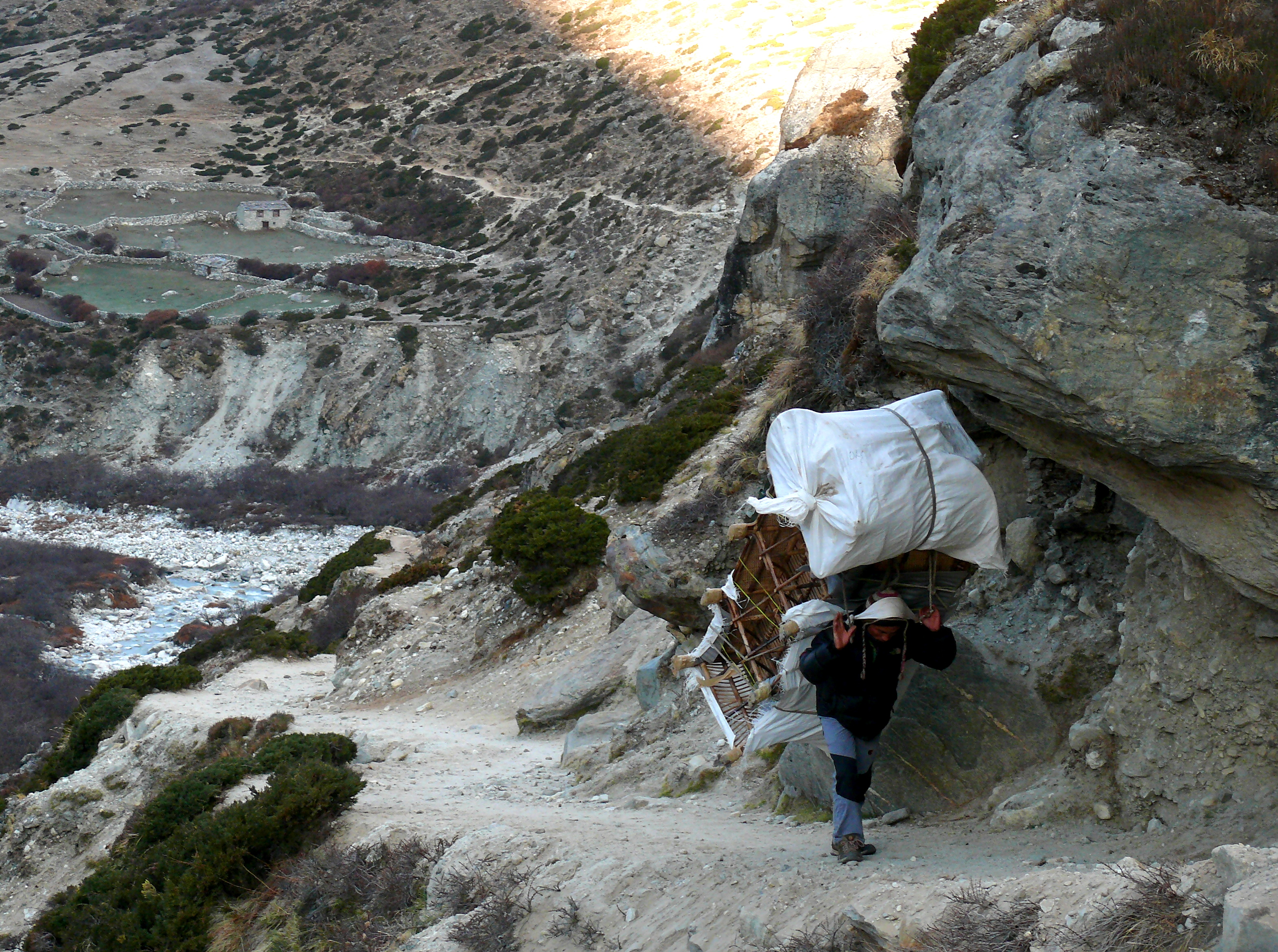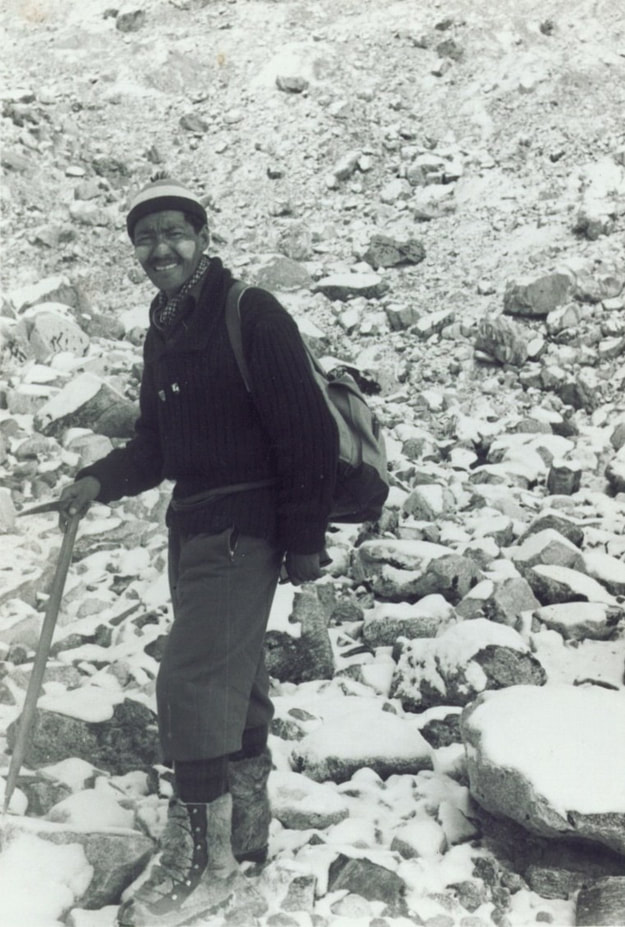How Sherpas played a Role in Mount Everest Mountaineering?
Written by Nate Aleshire
On May 29, 1953, two men became the first people to reach the summit of Mount Everest, the highest point in the world from sea level. This was the culmination of decades of planning, exploration, organizing, and scaling the Himalayas. One group of people was absolutely critical to Edmund Hilary and Tenzing Norgay's first successful summit. Tenzing himself was one of them; the Sherpa are an ethnic group from Nepal who have spent thousands of years living in the Himalayan mountain range. This meant that their bodies were very well-suited to living at high altitudes, and that they knew more about the mountain range, including Mount Everest, than anyone else.
What advantages did the Sherpa people possess over those more accustomed to living closer to sea level? Scientists believe that because they can spend most of their lives at high altitudes, their bodies become more efficient at using oxygen from breathing. This allows them to live where there is less oxygen in the atmosphere, and makes them more capable of strenuous physical activity at those higher elevations. However, their advantages over other climbers even out around 23,000 feet, as oxygen in the air becomes even more scarce. The Sherpas’ familiarity with the landscape of the Himalayas makes them essential guides, and their talent is demonstrated from the base to the top of Mount Everest.
Dr. A.M. Kellas was among the first to recognize the value of sherpas in high altitude mountaineering. Kellas was a physiologist and a chemistry teacher who spent several months exploring remote parts of the Himalayas in the early twentieth century. He did so most frequently with a number of reliable Sherpas. General Bruce, who led official British expeditions to Mount Everest, also knew that Sherpas were tough and skilled, so he always brought them along. During each of the earliest expeditions to Everest, one could expect to find Sherpas among the ranks of the teams.
An account from the 1921 British expedition makes note of how the unnamed Sherpa Bhotia was immensely helpful to the surveyors. This was because his physical capabilities and experience working in high-altitude climates allowed him to both haul equipment and guide the group if need be. Though there were other Tibetans among the expedition, the Sherpa Bhoita’s knowledge of local languages could certainly have assisted the team as well, as they received many gifts of food and other supplies on their journey. This indicates somewhat frequent contact with the locals. Maintaining good relations between the British mountaineers and surveyors was another vital component of their mission.
Another record from a reconnaissance group stationed near Everest from June 1935 through June 1936 reveals similar details. Sherpas were often used as porters, or people hired to carry equipment or luggage. This was because animals like mules or oxen have difficulty covering the rugged terrain of the Himalayas, and they do not handle the altitude changes well. Moreover, machinery was either not advanced enough or would have been too much of a burden to utilize. Hiring porters like Sherpas was the simplest solution, and it came with the benefits of comradery and local knowledge. In fact, some Sherpas were selected for specialized tasks because of their intelligence, as they operated photography equipment for the surveyors. There were also Sherpas who were held in high regard for their wisdom, as they were older and more experienced than others, and the foreign leaders of the expedition valued their suggestions. Each major excursion branching out from the main group included Sherpas, who assisted with the heavy supplies and equipment. This record also notes how two Sherpas became ill during the mission. The statement serves as an important reminder that despite their skill in mountaineering and their natural physiology, adapted for life high above sea level, Sherpas are still just as susceptible to sickness or injury as any other climber.
Unfortunately, tragedies are frequent on Everest, and the Sherpa people have seen more than their fair share. There is perhaps no better example of this than the expedition of 1922. George Mallory, a climber who would vanish from the mountain only two years later, led a team towards the summit, but they only made it to approximately 23,000 feet. This was less of a serious attempt to summit, and more of a test to see how far the team could climb Everest right before departing. The group left their camp too soon after a heavy snowfall, so the surrounding mountains were covered in an unstable blanket. Before long, someone or something triggered an avalanche. The disaster killed seven men, all of them Sherpa. Mallory was devastated by the loss, feeling responsible for them.
Even today, Sherpas are commonly found on Everest, and are considered to be some of the best guides any climber could hire. Due to the fact that Everest has become an extremely popular tourist site, there has been a greater demand for more guides and employees to work on the mountain, and Sherpas are easily some of the best equipped for the jobs. This influx of tourism and money has allowed for many aid foundations to be started and many donations to be made. These foundations could focus on many different areas, ranging from education for Sherpa children, medical training, medical facilities, and housing development. Sherpas are proud of their natural talents and learned skills in mountaineering. For decades, they have been praised for their ability as porters and guides, and they have begun to adapt to this role by training specifically for it. Still, Tenzing Norgay, one of the two men who were the first to stand on the top of Mount Everest, may be the most well-known Sherpa. This is despite the fact that Sherpas have played a very important role in expeditions and reconnaissance missions over the past 100 years.
Unfortunately, another major concern has arisen during the last century. Some Sherpas believe that their people have become overly reliant on tourism surrounding Everest. A lack of visitors also brought a lack of money, leaving those trained as guides without work, precariously waiting to see what comes next. Other Sherpas don’t want to work on Everest but see little opportunity elsewhere. They take those jobs and the potentially life-threatening risks that come with them.


